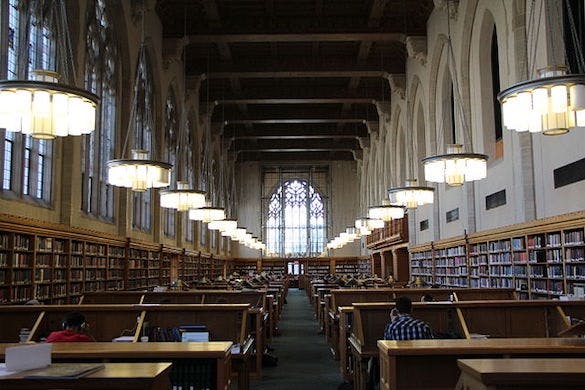The Unranking of American Law Schools
In a sudden move, a herd of top law schools puts progressive politics over prestige.

The implosion of the U.S. News & World Report law school rankings is the latest sign that the world of legal education is in a state of upheaval. The stampede of prestigious schools away from the rankings has alternatively been seen as a loosening of outdated metrics that stand in the way of progress or a headlong repudiation of merit on the part of those training future officers of the court.
U.S. News describes its own methodology, one that now will have far fewer subjects, as one that evaluates “institutions on their successful placement of graduates, faculty resources, academic achievements of entering students, and opinions by law schools, lawyers and judges on overall program quality.”
The movement away started with the consensus no. 1 school, Yale. Once it pulled out, Harvard, Berkeley, Georgetown, Columbia, UCLA, Stanford, Michigan, and Duke followed, throwing the rankings into a state of crisis. NYU, Virginia, Penn, and Cornell are the only members of the so-called Top 14 schools that have not bolted.
Those rankings have become U.S. News’s calling card and lean heavily on such quantitative measures as the Law School Admission Test. The LSAT is a skills based exam that tests logical-reasoning, and thus is in theory less tied to students’ educational, social, or economic background.
The University of Chicago, which this year claimed the third spot, is sticking with the rankings. Chicago’s dean, Thomas Miles, writes in a note to students that the “rankings of academic institutions clearly have a readership” and warns that absconding would generate “inaccurate information.”
Mr. Miles goes on to cite his university’s “dedication to the free expression of ideas and to questioning viewpoints,” and declares that “our aim is not to suppress opinions.” Most of the information plugged into the ranking system is, he adds, “already public.” Chicago aspires to “unabashed enthusiasm for the life of the mind.”
Yale’s dean, Heather Gerken, articulates a contrary view. She notes that her school has “taken the top spot every year.” Nevertheless, she reckons that the “U.S. News rankings are profoundly flawed — they disincentivize programs that support public interest careers, champion need-based aid and welcome working-class students into the profession.”
A panel at the American Bar Association has chimed in as well, recommending an end to the requirement that law schools demand from applicants results of the LSAT or another standardized test. That would free schools to devise admissions processes free from the exam, which dates back to 1948. If approved, that change is not expected to go into effect until 2025.
One member of the panel, the dean emeritus of UC Hastings, opined, according to the Wall Street Journal, that in the “grand scheme of things, folks of color perform less well on the LSAT than not, and for that reason, I think we are headed in the right direction.”
The rise of standardized testing as a criteria of evaluation for admission suggests that the intent was otherwise. Nicolas Lemann’s “The New Elite: The Secret History of the American Meritocracy,” argues that the “establishment of a regime of standardized aptitude test” was meant to “generate a new American leadership elite” and “set up a new social order during the second half of the twentieth century.”
At the core of this new approach was the Scholastic Aptitude Test. Derived from Army intelligence exams, it had its debut in 1926 as a way to provide a more “objective” basis for admissions, in stark contrast to the effort by such titans as Harvard’s president, Abbott Lawrence Lowell, to use criteria such as “character and fitness” to shape incoming classes.
The founder of Original Jurisdiction, David Lat, tells the Sun that the law schools that have abandoned the rankings are eager to “make changes” to how they evaluate applicants without “worrying about the consequences.” Ditching the metrics will give schools “leeway at the margins” to take whom they like — say, a novelist whose creative talent wasn’t captured by the LSAT.
The flight from the rankings takes place against the backdrop of a pair of cases before the Supreme Court, whose disposition could reorder the admissions landscape. Students for Fair Admissions v. University of North Carolina and SFFA v. Harvard, argued last month, turn on whether the use of race in admissions violates either federal law or the Constitution or both.

